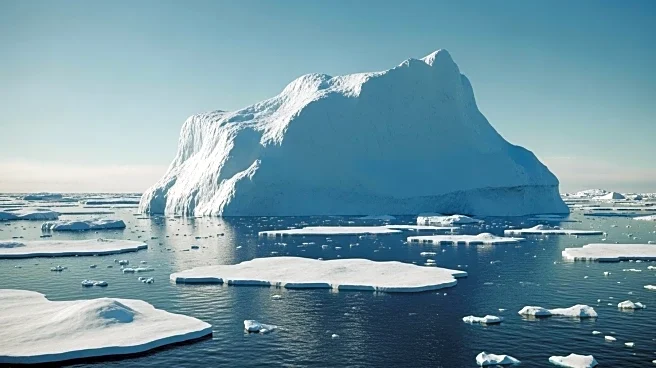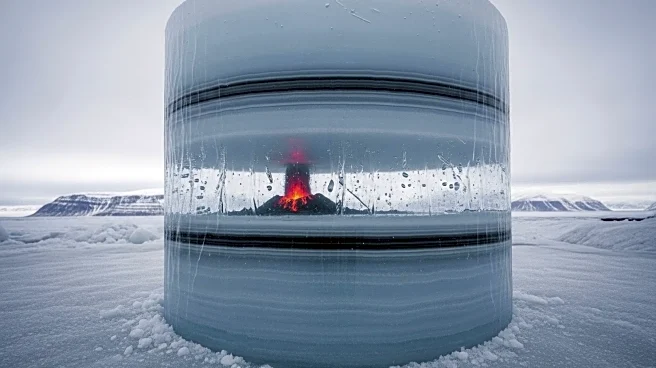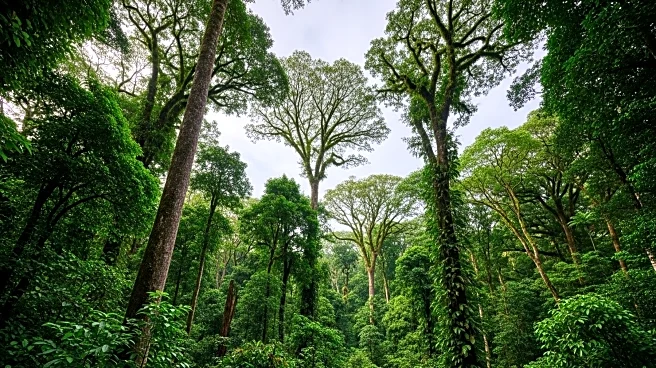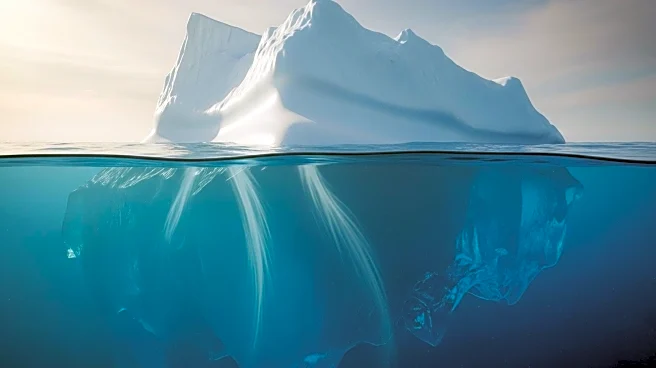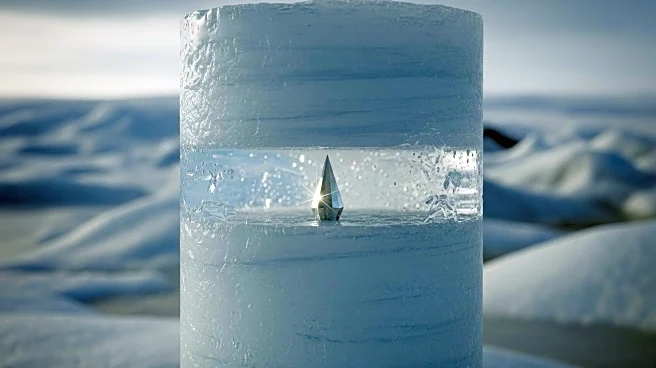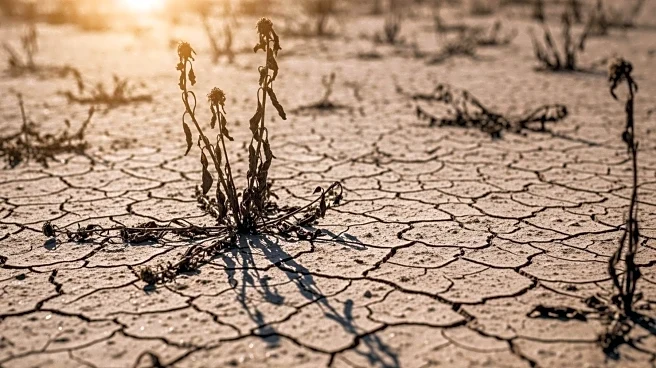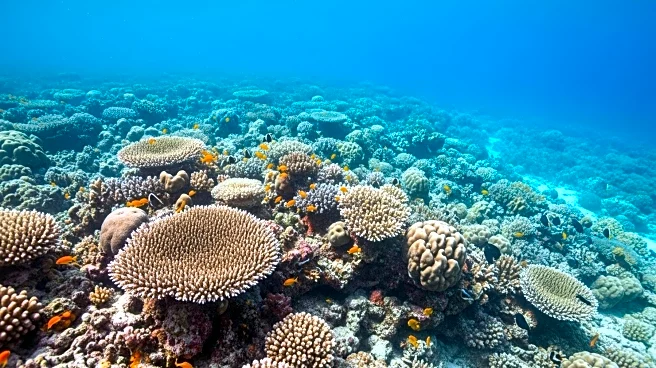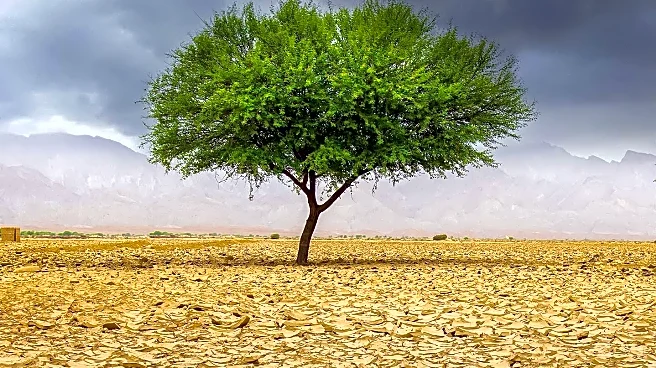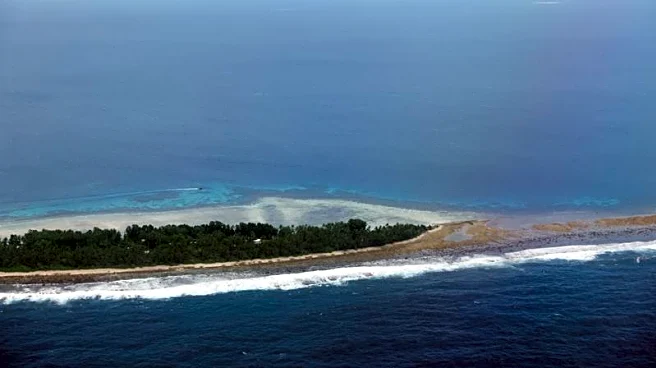What is the story about?
What's Happening?
Scientists have documented an unprecedented subglacial flood in Greenland, releasing 23 billion gallons of water and challenging existing models of ice dynamics. The event, observed by researchers and detailed in Nature Geoscience, highlights the power of meltwater trapped beneath the ice sheet. This discovery has surprised scientists and underscores the need for further research into subglacial lakes and their impact on ice sheet systems. The flood formed a 278-feet-deep crater over a 0.7-square-mile area, indicating significant disruption. The findings prompt a reevaluation of the frequency and consequences of such occurrences, emphasizing the role of climate change in accelerating ice melting.
Why It's Important?
The Greenland flood has profound implications for understanding climate change's impact on Earth's ice sheets. As global warming continues, these findings highlight the importance of monitoring subglacial processes to predict future changes in ice dynamics. The event underscores the interconnectedness of scientific research and societal preparedness, as data from satellite missions provide critical insights into environmental changes. Understanding these processes is crucial for developing strategies to mitigate climate impacts and enhance societal resilience, particularly in polar regions where ice sheet stability is vital for global sea-level regulation.
What's Next?
Researchers are expected to focus on understanding the frequency of subglacial lake drainage and its effects on ice sheet stability. Enhanced satellite technology and data analysis will play a pivotal role in uncovering more about these hidden processes. The insights gained from this event will guide future research and policy-making efforts, potentially reshaping strategies for climate change adaptation. Scientists will continue to explore the complexities of subglacial environments, aiming to unravel how these phenomena influence ice sheet dynamics and contribute to global sea-level rise.
Beyond the Headlines
The discovery of the subglacial flood raises questions about the future of ice sheet research and climate change adaptation. It prompts a reevaluation of existing models and highlights the need for continued exploration of subglacial environments. As researchers delve deeper into these phenomena, they hope to uncover hidden forces beneath the ice that may reshape our understanding of climate dynamics and global sea-level rise. This event serves as a reminder of the critical role of scientific research in addressing climate challenges and informing policy decisions.
AI Generated Content
Do you find this article useful?
